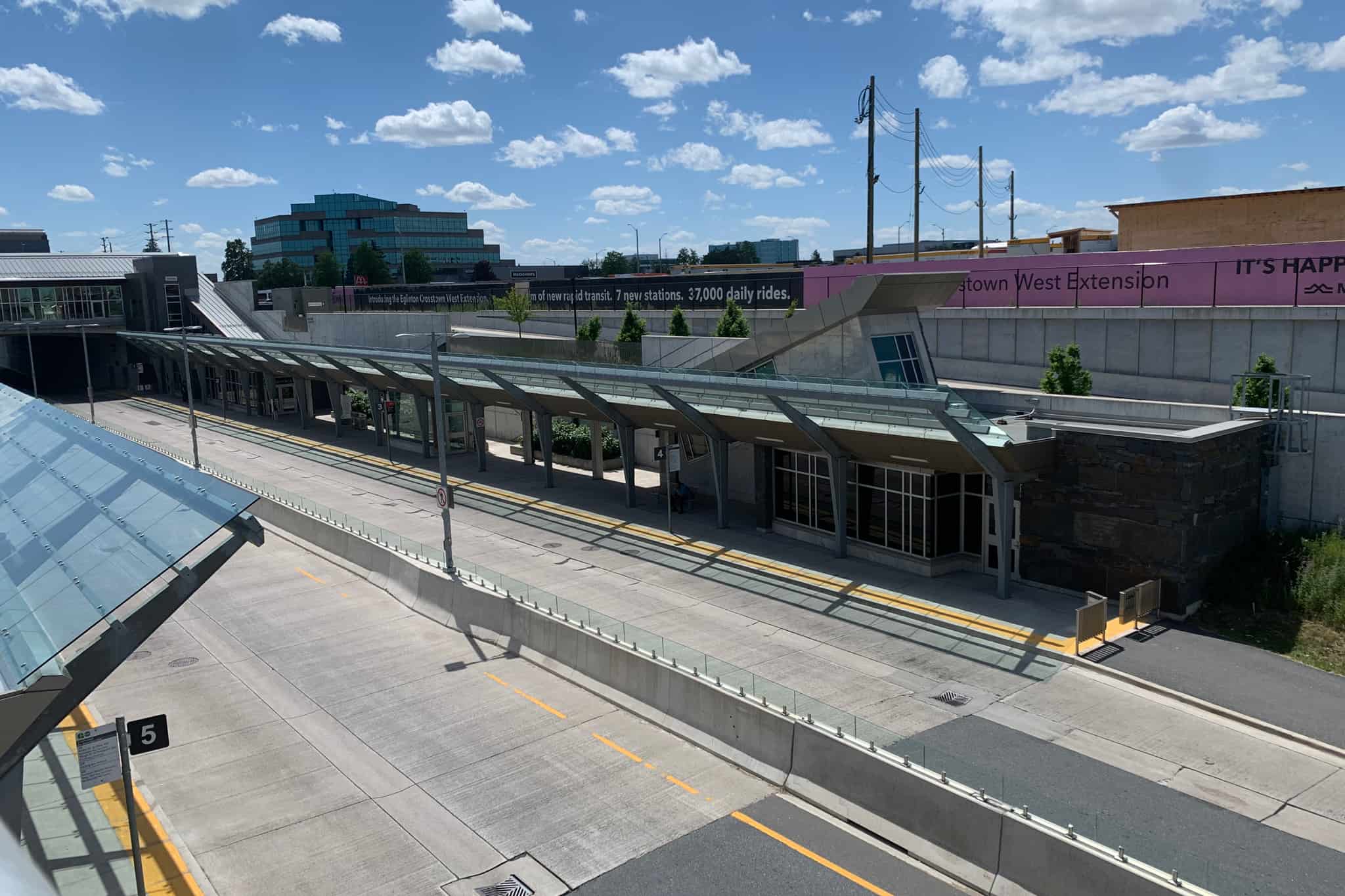Do people use the $500 million Mississauga Transitway?
Published October 25, 2024 at 11:33 am

Several years ago, ridership on the Mississauga Transitway nosedived, dropping by almost 91 per cent on the $528 million bus rapid transit route.
The drop was attributable to the COVID-19 pandemic — a common theme for many transit routes throughout the world.
The Mississauga Transitway, however, has also faced criticism in the past for its overall design and location, adding intrigue to the question: has ridership on the route recovered in the years since the massive drop?
INsauga.com reached out to the City of Mississauga for an update and it appears that while numbers have improved, it has yet to fully recover.
If you use or pass by the Transitway, it’s common for it to not appear busy.
The service was completed in 2017, allowing riders to travel from Winston Churchill Boulevard in the west to Renforth Station in the east.
In that first full year of service, the system was able to reach its goal of five million riders, Geoff Marinoff previously told INsauga.com when he was the City of Mississauga’s director of transit.
“The Mississauga Transitway continues to be an important part of the MiWay network, moving people quickly and effectively across the east-west corridor of Mississauga,” City of Mississauga spokesperson Irene McCutcheon said recently.
In 2019, ridership on the Mississauga Transitway surpassed six million.
During the COVID-19 pandemic one year later, just 574,956 rides were recorded.
McCutcheon said that since then, numbers have improved. But ridership still hasn’t reached 2019 levels.
“The lockdowns associated with the COVID-19 pandemic directly impacted ridership across the network, particularly on those routes servicing office locations, and resulted in reductions in service, but since 2022 we have been increasing service significantly,” McCutcheon said.
In 2023, there were more than 4.45 million passenger boardings on routes that operate on the transitway — still around 27 per cent lower than in 2019, McCutcheon said.
She said that was due to reduced service levels, particularly on express routes.
Ridership down so far in 2024 compared to 2023
“In 2024, MiWay has made several adjustments, including increasing capacity and frequency to meet the growing demand for service,” McCutcheon said.
She said this year, there has been “additional passenger activity” on routes that operate along the transitway.
However, it appears that ridership numbers have actually dropped so far in 2024 compared to 2023.
Figures provided by the City show that from January until the end of September this year, ridership was just under three million on the Transitway. During the same period in 2023, it was at more than 3.3 million.
And in 2019 prior to the pandemic, ridership was at more than 4.5 million during the same timeframe — more than 52 per cent higher than in 2024.

Despite that, the City views the growth over the past few years positively.
“The City is pleased with the overall growth in ridership,” McCutcheon said.
Have concerns around design and location been addressed?
Marinoff previously suggested to INsauga.com in 2022 that Mississauga is a new city and building transit will take time. He admitted that some of the Transitway stations suffer from a “last mile problem” meaning every transit trip starts and finishes with a walk — sometimes a long one.
He suggested development needs to move toward more mixed-use communities so people don’t need cars as much.
INsauga.com asked the City if since then, any changes have been made to address those concerns.
“We are developing the next MiWay transit service master plan which plays a crucial role in identifying improvements to enhance access to the Transitway stations,” McCutcheon said.
“MiWay is working to further integrate the Transitway with the overall transit network by anchoring and connecting local and express routes to the stations.”
She indicated that includes helping riders make connections to and from the Transitway at major stations like Renforth — MiWay’s 10th busiest — and the City Centre Transit terminal — the transit agency’s busiest.

That will increase ridership by offering interregional connections like to Toronto, and faster travel options across the city, McCutcheon said.
“We look forward to the future addition of the Eglinton Crosstown West Extension, which will no doubt result in increases to Transitway routes,” she added.
Metrolinx officials have also noted that once the Hazel McCallion Line LRT is completed, it will also connect riders to the Transitway.
And when e-bikes and e-scooters hit the streets in Mississauga earlier this year, the City touted the micro-mobility system as one way to help residents connect to the route.
In terms of development around the Transitway, it doesn’t appear that mixed-use communities have been in the works.
The area has primarily seen offices in the Airport Corporate centre area which is in the city’s east end, just south of Highway 401, McCutcheon said.
The City doesn’t have any set goals for ridership on the Transitway specifically.
But McCutcheon said it’s expected numbers will increase across the MiWay network, and officials “will continue to increase services along the Transitway as ridership demands increase.”
Meanwhile, several Transitway stations have been closed since Sept. 23 due to a construction project and are scheduled to reopen Nov. 1.
— With files from Karen Longwell
INsauga's Editorial Standards and Policies